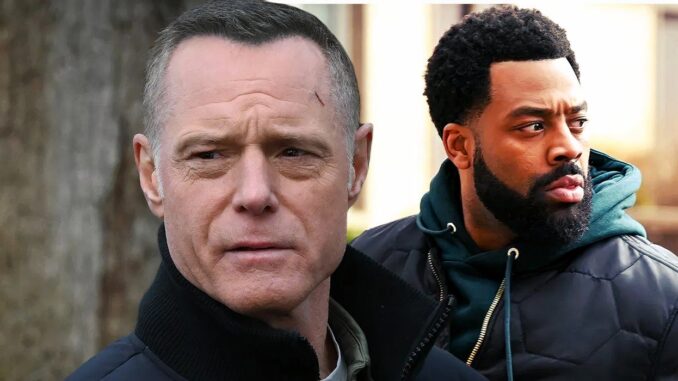
The world of television, much like life itself, is a stage for constant evolution. Characters grow, storylines twist, and the actors who breathe life into them embark on their own profound journeys. Nowhere is this more apparent, and perhaps more appreciated by devoted fans, than in the gritty, high-stakes universe of Chicago P.D. Here, the concept of "before and after" transcends mere cosmetic changes; it’s a testament to artistic dedication, the relentless march of time, and the incredible transformations that etch themselves onto the very essence of the cast. These aren't just superficial makeovers; they are poignant reflections of growth, resilience, and the deepening of character that viewers have come to love.
Consider, first, the undeniable force that is Jason Beghe, the gravel-voiced patriarch Hank Voight. In the early days of P.D., Beghe brought a raw, unrefined intensity to Voight, a character still reeling from past transgressions and operating firmly in the gray. We knew he was tough, a rule-bender, but there was an almost youthful aggression to his methods. Fast forward to the present, and the "after" is a masterclass in controlled power and battle-worn gravitas. Beghe's transformation isn't just physical—though the lines on his face, the weary set of his jaw, and the subtle silvering of his hair speak volumes of Voight’s relentless battles. It’s the deepening of his character's soul, mirrored in Beghe's nuanced performance. The rage is still there, but it’s tempered by profound loss, a heavy sense of responsibility, and an almost paternal wisdom. We love this transformation because it shows the toll of leadership, the cost of justice, and the enduring strength of a man who has seen too much. Beghe doesn't just play Voight; he has become Voight, his very being sculpted by the crucible of the character’s experiences.
Then there’s Sophia Bush, who embodied the complex Erin Lindsay. When she first graced our screens, Bush brought a vibrant, almost youthful spark to the troubled detective. She was beautiful, yes, but beneath the surface simmered a fierce fragility, a past that haunted her. Her "before" was marked by the fresh-faced glamour often associated with her earlier roles. As Lindsay’s arc progressed, particularly through her struggles with addiction and the emotional weight of her cases, Bush’s "after" was a quiet but powerful shift. The bright-eyed exuberance gave way to a more hardened, world-weary look. Her smile, when it appeared, was often tinged with sadness, and her eyes held the knowledge of profound pain. This transformation was less about dramatic physical alteration and more about a deepening of performance, the subtle etching of life’s bruises onto her portrayal. We loved seeing Bush shed any residual "teen drama star" image, embracing the grit and emotional depth required to truly portray a detective fighting her inner demons while battling crime on the streets. It was a testament to an actor committing fully to the arduous journey of her character.
The journey of Jesse Lee Soffer as Jay Halstead offers a subtle yet equally compelling "before and after." In the initial seasons, Halstead was the younger, perhaps more impulsive, hot-shot detective, often driven by instinct and a desire to prove himself. His "before" showed a charming earnestness, a clear-eyed idealism. The "after" is a study in maturation. Soffer's Halstead evolved into a grounded, deeply empathetic, and often agonizingly morally conflicted leader. The youthful spark in his eyes has been replaced by the quiet intensity of a man who has witnessed unimaginable horrors and made impossible choices. His physical presence, too, became more solid, more authoritative, reflecting his character's growth into a seasoned veteran. We love this transformation because it’s relatable; it’s the quiet progression of a good man gaining wisdom, battling his own demons, and stepping into his own. It’s the subtle art of an actor allowing time and experience to sculpt not just his face, but the very essence of his portrayal.
And let’s not forget the striking metamorphosis of Marina Squerciati as Kim Burgess. She began as an eager, slightly naive patrol officer, full of hope and a desire to make a difference. Her "before" was marked by an almost wholesome energy. But Burgess’s journey has been one of relentless hardship, from abduction to assault, from lost pregnancies to the complexities of adoption. Squerciati’s "after" portrayal embodies a profound resilience. While her beauty remains, her eyes now carry the weight of countless traumas, her expressions betray a deeper understanding of human suffering, and her demeanor has shifted from hopeful to fiercely protective. We see the journey etched onto her, a testament to an actor’s ability to allow a character’s pain and growth to physically manifest. We love her transformation because it showcases the enduring strength of the human spirit, the power of perseverance, and the beauty of a character who, despite everything, continues to fight for justice.
In essence, the "before and after" of the Chicago P.D. cast is more than just a superficial comparison of old photos to new ones. It is a profound illustration of the acting craft, a testament to the dedication required to embody characters over a decade. These transformations are beloved because they are authentic; they reflect the characters' struggles and triumphs, the actors' commitment to their roles, and the relentless passage of time that shapes us all. They are a visual chronicle of growth, resilience, and the incredible, often subtle, shifts that make these characters feel so real, so flawed, and so utterly human. We don't just love the transformations for their visual impact; we love them for the rich tapestry of life, loss, and unwavering determination they represent, keeping us hooked, season after season.
